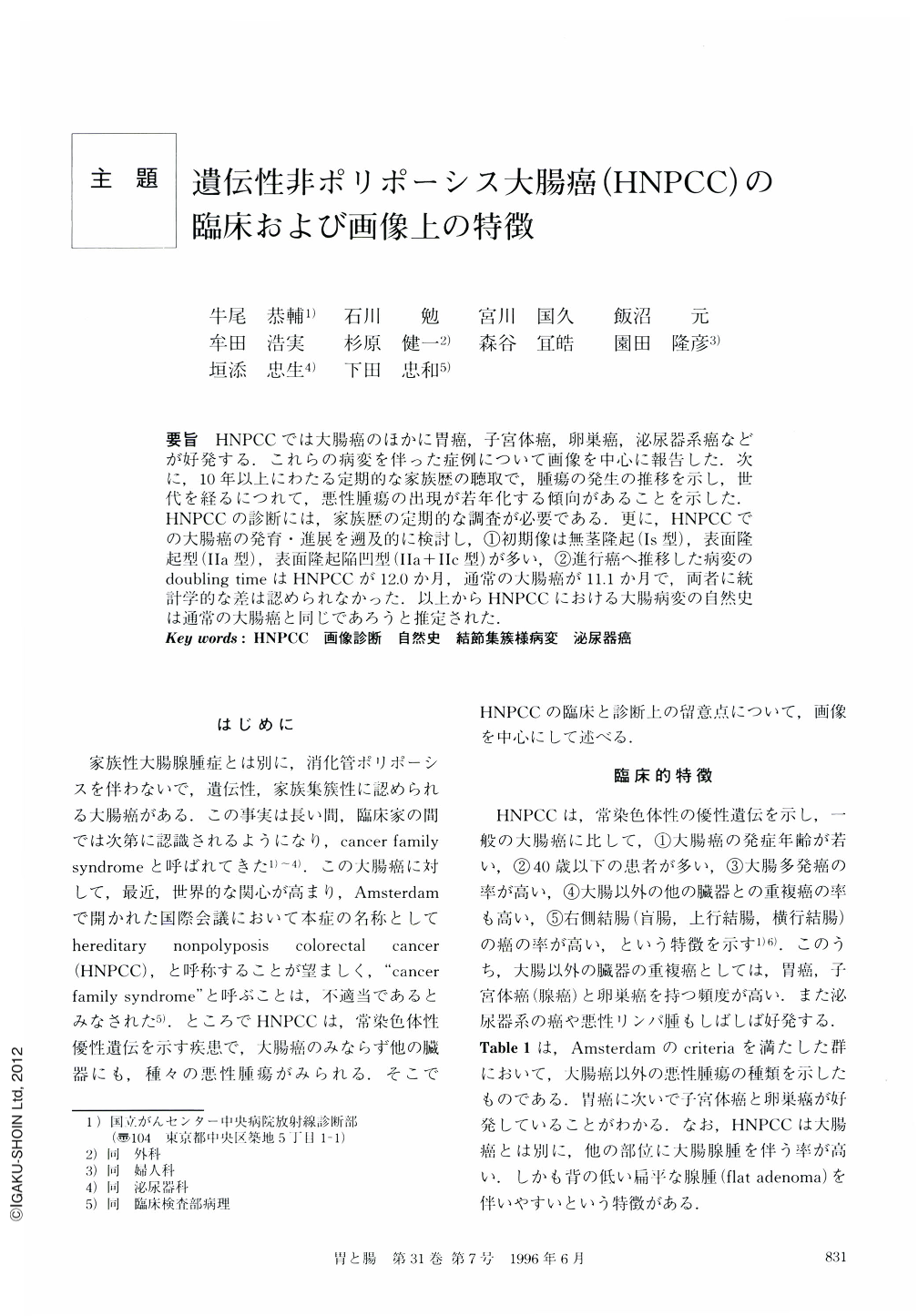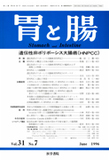Japanese
English
- 有料閲覧
- Abstract 文献概要
- 1ページ目 Look Inside
要旨 HNPCCでは大腸癌のほかに胃癌,子宮体癌,卵巣癌,泌尿器系癌などが好発する.これらの病変を伴った症例について画像を中心に報告した.次に,10年以上にわたる定期的な家族歴の聴取で,腫瘍の発生の推移を示し,世代を経るにつれて,悪性腫瘍の出現が若年化する傾向があることを示した.HNPCCの診断には,家族歴の定期的な調査が必要である.更に,HNPCCでの大腸癌の発育・進展を遡及的に検討し,①初期像は無茎隆起(Ⅰs型),表面隆起型(Ⅱa型),表面隆起陥凹型(Ⅱa+Ⅱc型)が多い,②進行癌へ推移した病変のdoubling timeはHNPCCが12.0か月,通常の大腸癌が11.1か月で,両者に統計学的な差は認められなかった.以上からHNPCCにおける大腸病変の自然史は通常の大腸癌と同じであろうと推定された.
Patients with HNPCC may develop gastric cancer, endometrial cancer, ovarian cancer, or urogenigal cancer besides colorectal cancer. We report HNPCC cases with these lesions from the diagnostic imaging viewpoints. Regular family history taking of the patients with HNPCC for more than ten years revealed a difference of tumor development among the generations tumors in the HNPCC family may be found earlier in their age as the generation goes. Regular family history taking would be essential for the diagnosis of HNPCC. The development and extension of HNPCC were evaluated retrospectively and the results were summarized as follows: 1) Most of the initial lesion were found to be the sessile elevated type (type Ⅰs), superficial elevated type (type Ⅱa), or superficial elevated and depressed type (type Ⅱa + Ⅱc). 2) Doubling time of the lesion which developed advanced cancer in the HNPCC was 12.0 months, whereas that in the usual colorectal cancer was 11.1 months. There was no statistical difference between the two doubling times. Therefore, natural history of the colorectal lesion in the HNPCC may be the same as that in the usual colorectal cancer.

Copyright © 1996, Igaku-Shoin Ltd. All rights reserved.


